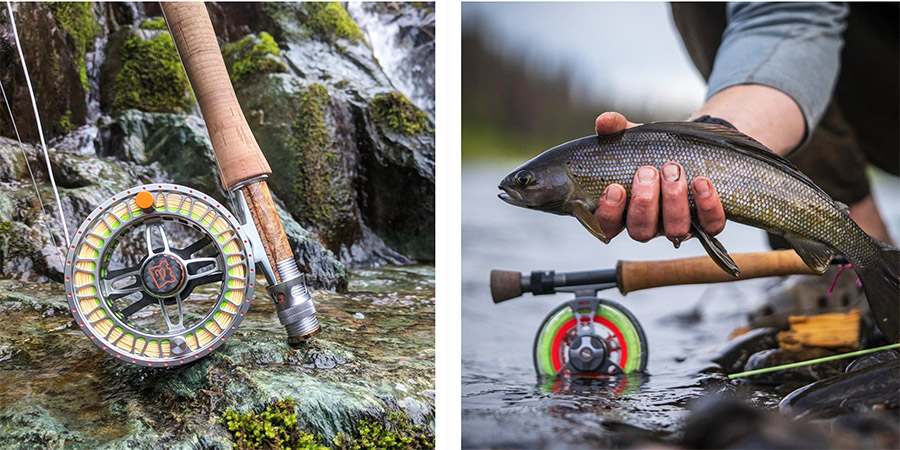S&P Global Ratings revised its debt outlook on Pure Fishing to stable from negative as the fishing gear manufacturer outperformed S&P’S 2020 base case for revenue, EBITDA, cash flow, and leverage. The rating agency also revised its 2021 revenue and EBITDA expectations upwards because of the high expected demand for fishing products at least through the first half of 2021.
S&P noted that the upward revision comes despite very high anticipated leverage in 2021 because liquidity is adequate and EBITDA will likely cover fixed charges under its base-case forecast. At the same time, S&P affirmed its ‘CCC+’ issuer credit rating and rating on its first-lien term loan.
The stable outlook reflects S&P’s expectation that even though Pure Fishing’s leverage could remain high in 2021, EBITDA should cover fixed charges, and liquidity will likely be adequate in 2021 reducing a chance of a downgrade over the next 12 months.
S&P wrote:
“We believe the company has adequate liquidity and sufficient anticipated EBITDA coverage of fixed charges, reducing the possibility of a downgrade this year. However, we believe the company’s leverage in 2021 will remain very high and could be unsustainable if there is unexpected volatility in fishing equipment demand or an inadvertent operating misstep over the next two years. Pure Fishing used excess cash in the second half of 2020 to pay down a substantial portion of its ABL balance, and it reduced outstanding ABL borrowings to approximately $31 million as of December 2020. In addition, the company had approximately $42 million in cash as of Dec. 31, 2020. As a result, the company has adequate liquidity over the next 12-to-24 months under our base-case operating performance assumptions, and we believe a near-term default is unlikely given the company’s next debt maturity is 2025. However, our ‘CCC+’ rating reflects a capital structure that could become unsustainable depending upon whether, and by how much, fishing equipment demand moderates, assuming an end to the pandemic later this year, or if the company inadvertently encounters operating missteps.
“The pandemic and social distancing measures increased participation in outdoor activities like fishing, driving strong demand for angling equipment and other outdoor products. We expect wholesale demand to continue into the second half of 2021. As a result of very high demand, Pure Fishing experienced revenue growth of 19.3 percent in 2020, and we believe the company was able to significantly reduce leverage on a lease-adjusted basis from above 10x in 2019 to around 8x in 2020. It is our understanding that retailer inventories of fishing products are currently low and that strong sales trends could continue through at least the first half of 2021 as retailers rebuild very low inventory bases. Our base-case forecast incorporates the expectation that the company continues to experience strong demand in the first half of 2021, but that widespread immunization to COVID-19 could moderate or reduce consumer demand for outdoor recreational products starting in the second half of 2021, possibly resulting in softening revenue trends. Our current expectation is for low- to mid-single-digit-percent revenue growth in 2021, but we assume revenue declines approximately 10 percent in 2022, which would still be more than 10 percent above 2019 levels. However, it is unclear to what extent, if any, consumer demand for fishing products will decline. If new anglers continue to participate in the sport, revenue could be higher than our forecast for 2022. Additionally, if new anglers continue participation in the sport following widespread immunization, we believe they would likely purchase both higher-end fishing equipment and consumable products like fishing line, bait and tackle. Such products typically generate a better margin than fishing rod kits, which made up a higher proportion of the company’s revenue in 2020 than in previous periods. The company has undertaken several cost-savings initiatives that could help it improve margin. However, we believe continuing COVID-19-driven supply chain disruptions could result in elevated shipping and raw material costs in 2021, which could potentially offset the company’s savings initiatives and result in a full-year 2021 EBITDA margin in line with 2020 levels. Our base case assumes demand will slow down in 2022, leading to some modest decline in EBITDA margin. Our base case also assumes the company will begin to rebuild its depleted inventory in 2021, which will result in about $10 million of working capital uses of cash flow. Under these assumptions, we believe the company could end 2021 with lease-adjusted leverage in the mid-7x area, and that if demand were to pull back in 2022, leverage could rise above 8x. We expect Pure Fishing could also maintain EBITDA coverage of interest expense of around 2x in 2021 and that coverage could worsen if demand were to pull back in 2022, but could still be above 1.2x.
“Pure Fishing’s retailer concentration makes it vulnerable to potential inventory corrections, and it participates in a highly fragmented and competitive fishing equipment market. Pure Fishing has faced significant operating challenges over the last few years, resulting in year-over-year revenue declines in 2017-2019. We believe these revenue declines are partially a result of retailer inventory corrections, particularly following the merger of Bass Pro Shops and Cabela’s. Additional disruptions in the company’s concentrated retailer base could result in further volatility in the company’s small revenue and cash flow bases as inventory policy and purchasing decisions by its largest customers can have a significant effect on the company’s revenue. We believe this revenue volatility is demonstrated by the company’s year-over-year revenue declines from 2017 to 2019, which we believe were at least partially a result of inventory corrections at some of its largest retailers. We also believe the company’s revenue declines could be indicative of market share loss to large competitors such as Daiwa, Shimano, and Rapala, as we believe that other competitors may not have seen revenue declines in the same period.
“The stable outlook reflects our expectation that even though Pure Fishing’s leverage could remain high in 2021, we anticipate EBITDA will cover fixed charges and liquidity will likely be adequate in 2021, reducing a chance of a downgrade over the next 12 months.”
Photo courtesy Pure Fishing
















